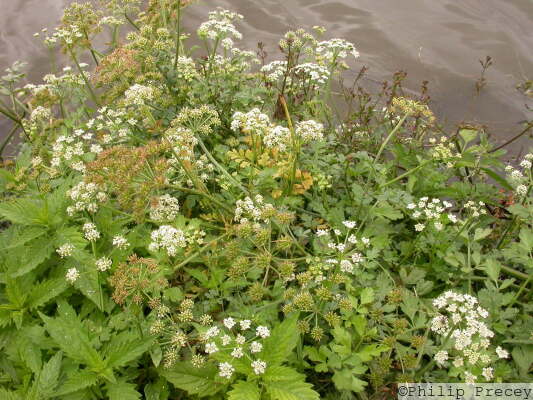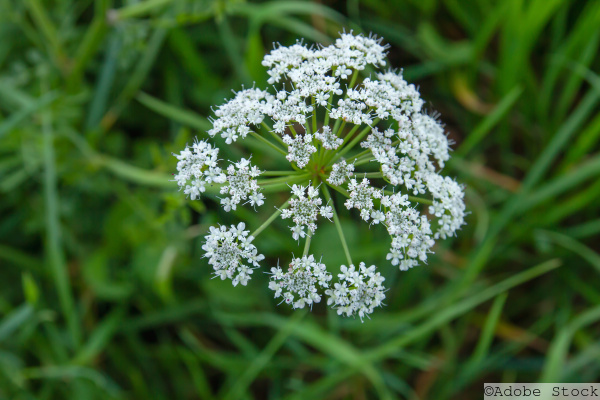Hemlock
Conium maculatum
<
>


 Type
Type Plant
Plant Status
Status Common
Common Widespread
Widespread Season
Season Summer
Summer In summer, Hemlock can be seen anywhere along the canal, usually in the verges between the towpath and the water.
A pretty biennial plant, Hemlock favours damp places and can grow in huge colonies on waste ground, on riverbanks, canal sides and even ditches or roadside verges. It produces umbrella-like clusters (called umbels) of white flowers in June which only last for a month or two. It’s the tallest growing umbellifer – Giant Hogweed grows larger but is an invasive, introduced species.
This native ‘weed’ or wildflower is often referred to as ‘poisonous hemlock’ because its highly toxic nature is one of the plant’s most defining characteristics. Hemlock features extensively in history for this trait – it was even the plant that was given to the famous Greek philosopher, Socrates, at his execution. Its toxins are alkaloids, which cause muscular paralysis, respiratory failure and even death. Thankfully, Hemlock also has a pungent, repellent smell, particularly when its leaves are crushed, which helps prevent too many accidental poisonings. Livestock tend to avoid it too, fortunately.
However, plenty of wildlife have developed mechanisms to deal with the plant’s toxicity; pollinators visit its flowers, it’s used as a larval food plant for several moth species and it plays host to a range of fungi.
This native ‘weed’ or wildflower is often referred to as ‘poisonous hemlock’ because its highly toxic nature is one of the plant’s most defining characteristics. Hemlock features extensively in history for this trait – it was even the plant that was given to the famous Greek philosopher, Socrates, at his execution. Its toxins are alkaloids, which cause muscular paralysis, respiratory failure and even death. Thankfully, Hemlock also has a pungent, repellent smell, particularly when its leaves are crushed, which helps prevent too many accidental poisonings. Livestock tend to avoid it too, fortunately.
However, plenty of wildlife have developed mechanisms to deal with the plant’s toxicity; pollinators visit its flowers, it’s used as a larval food plant for several moth species and it plays host to a range of fungi.
Tall and upright, Hemlock is fairly easy to identify. It has a distinctive, musty and unpleasant smell to its foliage and its stems are purple-blotched, smooth and hairless.
Leaves are large, quite lacey (like carrot and chervil) and finely divided, flowers are small and white and appear in umbrella-like clusters.


